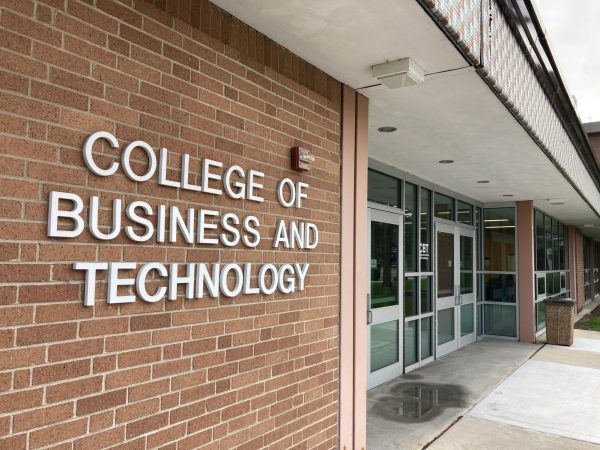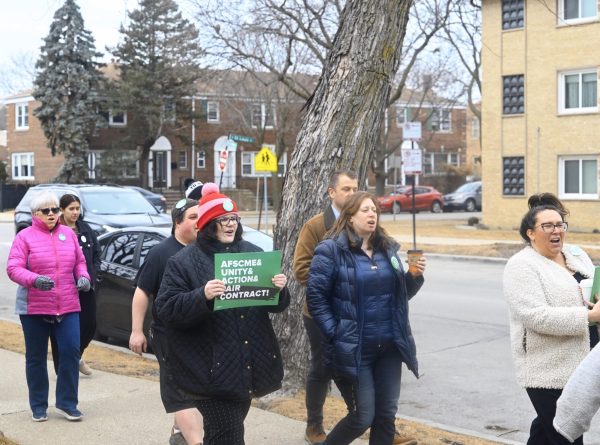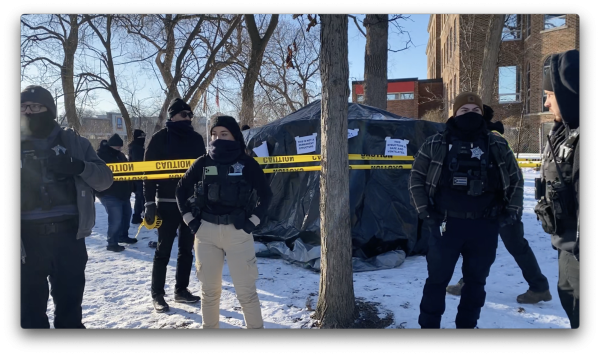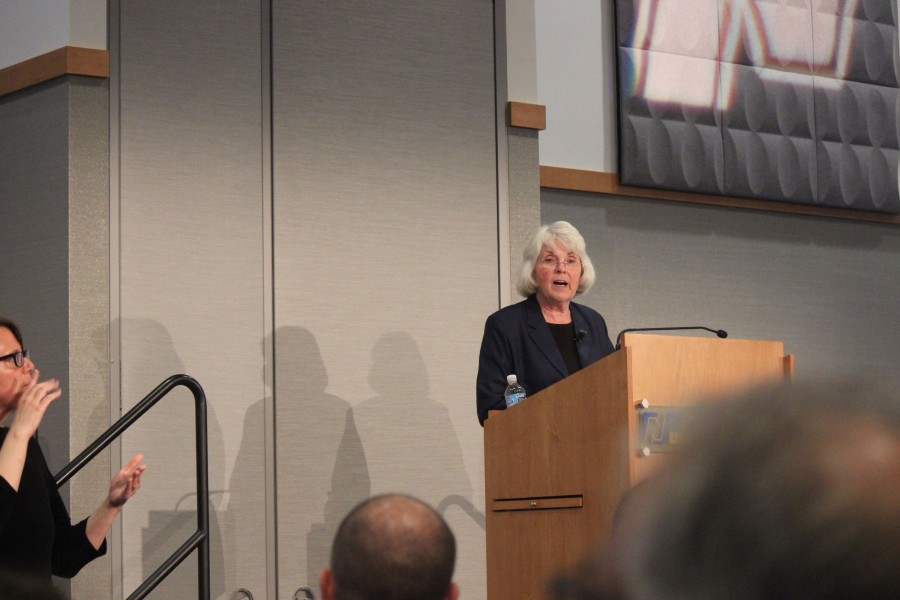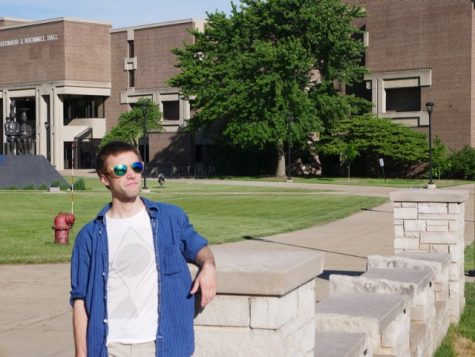The State of the University
Recent News
President Hahs speaks on the most pressing issues facing the campus.
President Sharon Hahs spoke to an assembled NEIU community, and on the many issues facing it, at the State of The University Address on Sept. 24 2015.
After being introduced by Faculty Senate Chair Erik Howenstine, Hahs spoke about an initiative taken in the fall of 2014 to refresh a strategy from 2008, six specific goals to be attained, the lack of state funds and student enrollment rates.
“This year I am acutely aware that the absence of the state budget and the questions of how this is impacting our university are uppermost in everyone’s mind,” Hahs said. “Notwithstanding the absence of the state appropriation for fiscal 2016, the answers to how we’re doing, and what is our future, are based on Northeastern’s Strategic Plan.”
Hahs described the Strategic Plan of the following main components: Mission, Vision, and Values. The subcomponents covered were Goals and Action Steps and an Annual Work Plan. The Strategic Goals and Action Steps are listed as follows:
One: Student Success; Two: Academic Excellence and Innovation; Three: Urban Leadership; Four: Exemplary Faculty and Staff; Five: Enhanced University Operations and Six: Fiscal Strength. Slides describing the plan can be found on the university’s website.
The president then introduced graphs to give a visual of the varying trends attached to undergraduate and graduate enrollment rates and degrees bestowed upon graduates. According to the graph depicting undergraduate rates, there was a peak in enrollment and registered credit hours in the fall of 2010, a slow decline that lasted through the fall of 2013 and a stagnant period from fall 2013 to fall 2014.
Graph number five noted a modest increase in the fall to fall retention of new freshmen, “There is a modest increase here,” Hahs said. “It is another good sign. First to second year retention is a reflection—not a measure—of overall retention. We have critical work to do here.”
“We must continue to work hard and understand and act on this trend,” she said.
Graduate enrollment rates and credit hours showed similar trends.
“We really need to stay focused on this one,” Hahs said. “The trend leveled off last year but took a slight dip this year.”
Degrees conferred were higher in fiscal year 2011 and 2012 but took a downward slant from fiscal year 2014 to 2015. Hahs described an increased competition between universities for the same student. She cited “the economy, the shrinking high school demographic (and) the national concern over the cost and value of a college education” as factors contributing to the decline.
“There is increased competition for the same students, with no significant relief in sight.” Hahs said. “That means we must increase our market share just to stay even. We can’t allow others to out compete us.”
Hahs transitioned to the topic of the budget, and gave a brief overview of the efforts made since Governor Bruce Rauner announced that 31.5 percent of state appropriations would be cut in his proposed budget. The resulting impasse between the governor and state legislature froze all appropriations to state universities. The university initially prepared for a smaller cut of the state budget appropriations, the preliminary fiscal year 2016 budget designed to accommodate for a 15 to 20 percent cut of state appropriations to the university. She said that Northeastern is still running on this preliminary budget
“Over the course of the summer, much of the overall state budget, over 90 percent, has begun to be paid out as the result of various consent decrees,” Hahs said. “Beyond the reach of this de-facto budget are a few human services agencies; lottery winners who won over $25 thousand; and remarkably, sadly, public universities.”
Hahs has been coordinating with the presidents of the other state universities through weekly conference calls since July. “Last week the presidents agreed to request a meeting with the governor,” Hahs said. “We continue to examine ways to put pressure on Springfield and I will keep you informed.”
Hahs continued to address a 2015 strategic action plan with the goal to develop more effective shared government at NEIU in order to strengthen communication between the committees. She said that she and Provost Richard J. Helldobler reached out to leadership such as the University Planning and Budget Council (UPBC), the University Advisory Council, the Faculty Senate, the AAP council, the Student Government Association and “representative academic leaders such as Deans, assistant associate provosts and chairs.”
The president touched on the planned expansion to the Education building, which is funded through state funds to the construction management agency for Illinois, the Capital Development Board. The design will be handled by a firm called Smithgroup/JRR Architectural while the infrastructure will be managed by university reserve funds.
A recap on the definition of reserve funds can be found in the Sept. 22 and June 23 issues of the Independent and online at www.neiuindependent.org.
“I remain optimistic for the future. But we have a significant damper — the lack of state appropriation — that creates a dark cloud over the university,” Hahs said. “It is extraordinarily hard to deal with what is unknown and beyond our control. This is a hinge time in history, for our nation, our state, and our university — we are living it. Let us work to turn this crisis into a challenge to be met.”
Your donation will support the student journalists of Northeastern Illinois University's The Independent, either in writers' payment, additional supplies and other items of note. Your contribution will allow us to purchase additional equipment for writers/photographers/illustrators and cover our annual website hosting costs.
Rut Ortiz
Robin is a English major. Her minors include Child Advocacy and Teaching English as a Second/ Foreign Language.



